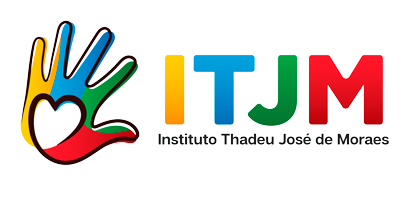It differs from the procedures described above because it obtains voluntary abstinence without requiring mutually exclusive choice. In a second phase, a new response is introduced and earns a larger reward (R2 – reward+). The difference in reward magnitude is sufficient to incentivize choice of R2 over R1, mesclun psychedelic effectively suppressing R1 in both rats (Bouton et al., 2017) and humans (Thrailkill and Alcala, 2021).
Translational preclinical models of contingency management can elucidate the neural circuitry and neurobiological mechanisms that promote abstinence during treatment, and those that ultimately contribute to subsequent relapse following treatment cessation. Indeed, the neural mechanisms underlying relapse following contingency management remain largely unknown, with no preclinical model recapitulating aspects of contingency management until the last decade (Ahmed et al., 2013; Venniro et al., 2016). Clinically, there are two main variations; voucher-based and prize-based (Regier and Redish, 2015). The voucher-based approach involves clients being awarded points for providing a drug-negative bodily sample, these points accumulate and can be exchanged for a voucher reward (Higgins et al., 1991; Higgins et al., 1993; Higgins et al., 1994; Iguchi et al., 1997; Regier and Redish, 2015).
Voucher-Based Reinforcement (VBR)
- Thus, if you give achild a small toy or sticker each time he makes his bed, the child will startmaking his bed more often.
- They can further engage the patient by discussing what reinforcer they are excited to work toward, orienting the patient toward the reinforcement inherent in CM.
- The availability of alternative nondrug reinforcers (i.e. vouchers, prizes) should decrease drug use if they are available in sufficient magnitude and according to a schedule that is incompatible with substance use.
- Furthermore, CM can be applied in virtually any context or setting and alongside any other form of treatment.
- Intrinsic motivation refers to one’s desire to do something because it is self-fulfilling, while extrinsic motivation relates to doing something to obtain an item of value or to avoid punishment.
- Not everyone in a treatment program will be working on the same goals at the same time.
Results generally indicate substantial short-term reductions in smoking when procedures include elements essential to the efficacy of this intervention. Contingency management may be particularly helpful for individuals trying to quit smoking for whom pharmacotherapy is not appropriate and for those disproportionately affected by smoking but not commensurately aided by standard treatment options. One such group is pregnant smokers, for whom the general consensus is that pharmacotherapy is contraindicated.
In clinics that adopt CM, training and supervision are paramount to ensure core aspects of CM are retained. Only about half of clinics providing CM arranged for in-house or off-site training (Olmstead, Abraham, Martino, & Roman 2012). Clinician skill in administering CM impacts patient outcomes (Hartzler, Beadnell, & Donovan 2017; Petry et al., 2012a), and supervision can maintain fidelity over time (Petry et al., 2012a,b). Most implementation efforts were developed in collaboration with research experts (e.g., Hartzler, 2015; Petry et al., 2014), and strategies that provide greater reach include web-based modules and phone consultation (Petry et al., 2014). Obtaining initial training and ongoing technical support from CM experts is key to successful implementation and compliance with Office of Inspector General regulations.
One of these therapies may be contingency management, an evidence-based therapy that can help you start and remain on the path to recovery from substance misuse. Contingency management involves the analysis and change of the functional contingencies in the environment that determine a person’s behavior. As a result, the behavior changes from its initial rate to a different rate of occurrence. In clinical work, this involves the development of new or alternative forms of adaptative behavior. Within a certain environmental context, a contingency describes a functional relationship among stimuli antecedent to a particular behavior (the target) and the consequences that follow the occurrence of the behavior. Contingency management is designed for clinical problems related to impulsivity; as such, its most common clinical application is among individuals with substance use problems (for a review, see Prendergast, Podus, Finney, Greenwell, & Roll, 2006; Sigmon, Dunn, & Higgins, 2007).
Gender-Specific Treatments for Substance Use Disorders
Budney, Bickel, and Hughes (1991) have developed a protocol called voucher-based reinforcement therapy (VBRT), in which clients earn vouchers for biological samples (urine or breath) that are tested negative for drugs. The vouchers typically represent a monetary amount but do not provide actual money, thereby enabling the client to acquire goods or facilitate activities conducive to a drug-free lifestyle with the long-term goal of continuous abstinence (Budney et al., 1991; Petry & Simcic, 2002). A review of the VBRT literature suggests that not only is VBRT efficacious in the treatment of SUDs, but that VBRT may also yield improvements across other therapeutic behaviors (e.g., clinic attendance, medication compliance; Lussier, Heil, Mongeon, Badger, & Higgins, 2006). One area in which contingency management has widespread potential benefitsis individual retention in treatment.
It’s not a therapy unto itself but rather an evidence-based behavior modification intervention. While motivational incentives can help individuals achieve their treatment goals, this method should be used in conjunction with another approach, such as cognitive behavioral therapy (CBT). CBT can help a person address their thoughts and feelings, eventually phasing out unhealthy thought patterns.
However, in some cases contingency management did not outperform the control condition; therefore, contingency management alone is unlikely to be a successful intervention for reducing crystal methamphetamine or other substance use in general or with sexual minority clients (Shoptaw et al., 2005; Menza et al., 2010). Empirical evidence is mixed about whether external rewards impact intrinsic motivation. In non-clinical contexts, providing external rewards to complete tasks such as puzzles or games may undermine intrinsic motivation and subsequent participation in them (Deci et al., 1999).
Contextual Factors in Addiction
This is referred to as operant conditioning—a type of learning where behavior can be modified when reinforced in a positive and supportive manner. It’s the reason employers use bonuses to reward top performers and parents give their kids an allowance for doing chores. In addiction treatment programs, this kind of reward or incentive is called contingency management (CM). The CM approach (also referred to as motivational incentives, the prize method, or the carrot-and-stick method) can famous fetal alcohol syndrome adults be highly effective in treating substance use disorders.
This refers to how long a person should receive the reinforcement in order to motivate the desired behavior. This can be described as how much of the reward should be provided to achieve the demi moore sober target behavior. This refers to the specific behavior or outcome, referred to as a “target.” A target can be a negative drug test or another desirable behavior. Clinical treatment settings have not widely embraced CM for reasons ranging from philosophical to theoretical and practical.

